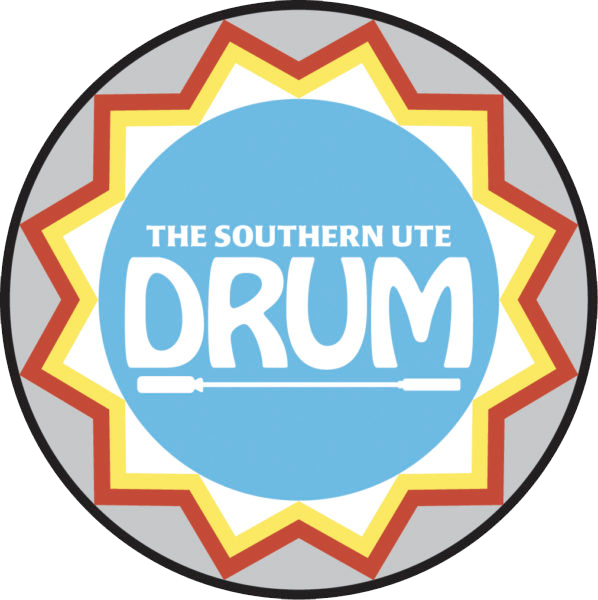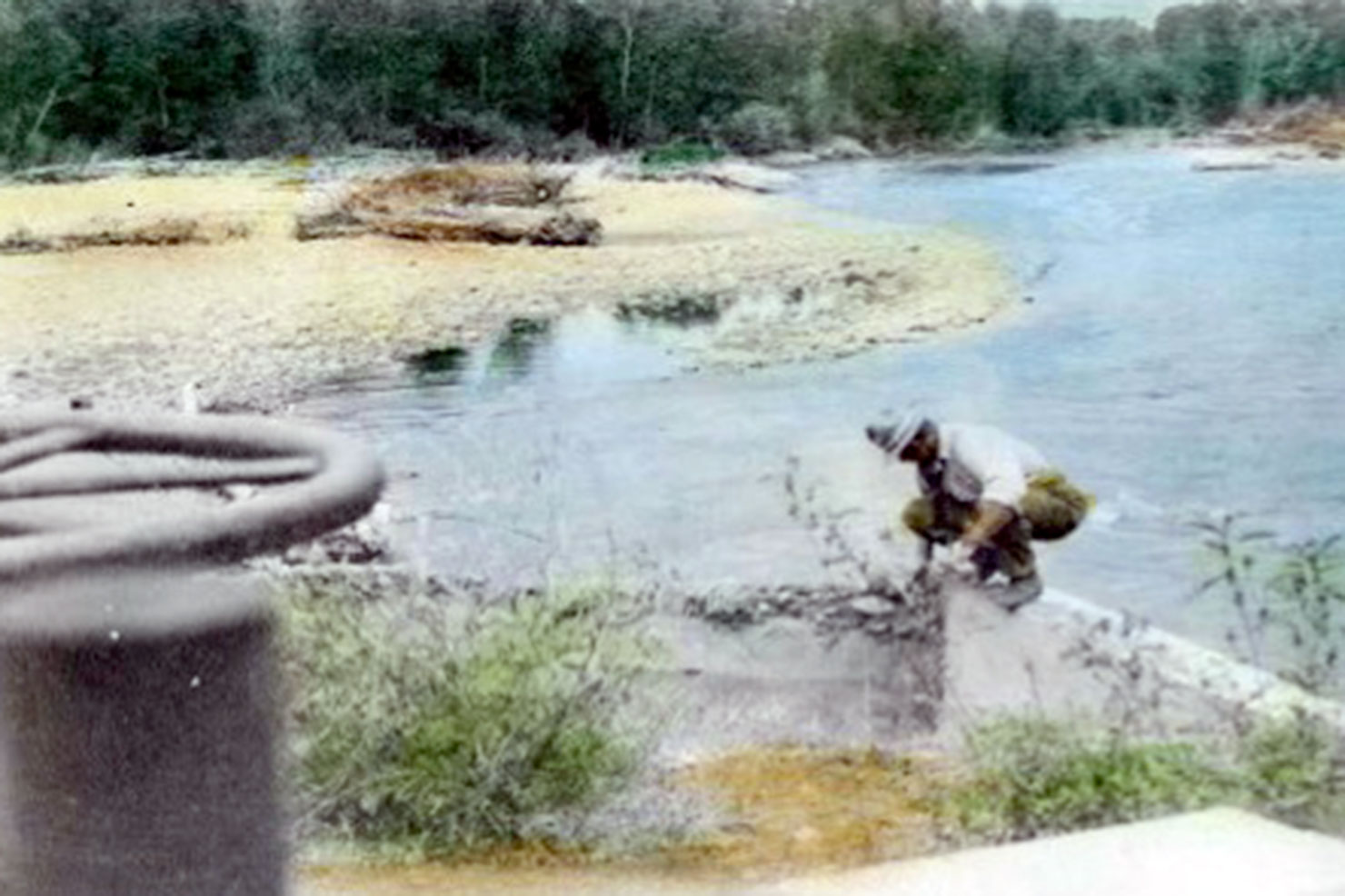The Southern Ute Indian Tribe’s Department of Natural Resources, Water Resources Division is pleased to present the first article in our Tribal Water series. The purpose of the articles is to provide current and historic information related to the Tribe’s water rights.
In light of the continuing drought in the Colorado River Basin and the recent completion of the State of Colorado’s Water Plan it is a good time to consider the Tribe’s significant role in managing this vital resource. Tribal allocations make up a large part of the Colorado River Basin water. The Southern Ute Tribe is a proud member of the Ten Tribes Partnership (TTP), which was formed to increase Tribal participation and involvement in Colorado River Basin decision-making. The TTP is working with the federal Bureau of Reclamation (BOR) to complete a Colorado River Basin Tribal Water Study that will focus on issues related to Tribal water in the Basin. Publication of the study is scheduled for release in January 2017.
The following brief history of the Tribe’s water rights is an excerpt from the Southern Ute section of the BOR–TTP Tribal Water Study document, which is currently being finalized.
HISTORY
“The signing of the 1868 Treaty (Treaty with the Ute Indians, 15 Stat. 619) created a reservation that encompassed roughly the western third of present day Colorado, including the vast watersheds of the Western Slope. But the discovery of gold and silver in the San Juan Mountains and the accompanying influx of miners led to the forcible relinquishment of the San Juan area and its mountainous headwaters under the Brunot Agreement of 1873 (Agreement of Sept. 13, 1873, ratified by Act of April 29, 1874, ch. 136.). Subsequent agreements and events in the 1870s and 1880s further reduced the Ute lands in Colorado, resulting in the relocation of the Northern Ute Bands to Utah and the Southern Ute Bands to a narrow strip along the New Mexico border in the southwestern portion of Colorado (www.southernute-nsn.gov/history). The implementation of the allotment policy under the Hunter Act of 1895 (28 Stat. 677, signed February 11, 1895, ch. 113) ultimately led to the Ute Strip being divided into two reservations, with the eastern allotted portion becoming the current Southern Ute Reservation and the western un-allotted portion becoming the current Ute Mountain Ute Reservation (The Southern Utes: A Tribal History, J. Jefferson, 1972).
Beginning with the Brunot Agreement, the government sought to discourage the hunting economy of the Southern Utes by transitioning them to farming (Report of the Secretary of the Interior, Carl Schurz, 1877). Because of this policy, water, and access to it, has played a large role in shaping and defining the settlement and development patterns on the Southern Ute Reservation. As early as 1880, as the concept of allotment was being debated, Indian Agent Henry Page pointed out in his annual report that, “land on the Southern Ute Reservation could not be cultivated without the use of irrigation ditches” (Ordeal of Change, F.L. Quintana, 2004). The first irrigation ditches to serve Southern Ute lands were built around 1885 and by 1888 almost 600 acres were reported to be in cultivation along the Pine River.
With the enactment of allotment on the Southern Ute Reservation, the construction of irrigation ditches took on a new priority. The majority of allotments were taken along the Pine River, but even with tracts laid out in long, narrow strips to maximize access to the riparian corridor, many Tribal members ended up with little access to irrigation water. In late 1896 the Indian Service (the predecessor to the BIA) began work on the Spring Creek Ditch to serve the majority of allotments east of the Pine River. Around the same time, the Animas Ditch was constructed to serve allotments along the Animas River.
In 1899 lands not already allotted on the Southern Ute Reservation were opened to homesteading and settlers quickly moved in to claim land and water (Quintana, 2004). Settlers and developers, under Colorado water law statute, enlarged some of the existing government ditches and claimed rights in them. The water situation was rapidly becoming complicated and contentious. Local Indian Agents pressed officials in Washington to act quickly to secure the necessary water rights for all Tribal allotments, but as Easterners, the officials didn’t appreciate the value of water in the West and the need for urgent action.
By 1914, Tribal and non-Tribal water claims on the Pine River, many of which were speculative, totaled more than ten times the natural flow rate of the river ([BIA] Irrigation Report, H. F. Robinson, 1914).
Under the Winters Doctrine, the Tribe had first rights on the Pine River, based upon the 1868 Reservation establishment date, but the amount of water the Tribe was entitled to was not yet determined. This was ultimately decided on the Pine River in the 1930 case United States v. Morrison Consolidated Ditch Co. But the question of reserved rights on other rivers across the Reservation remained and would not be fully answered for another 56 years.
The need for reservoirs, both to control seasonal flooding and to ensure a steady supply of irrigation water throughout the growing season, was recognized early in the settlement of the Reservation, but authorization of funding wouldn’t come for several decades. Vallecito Dam was the first to be authorized in 1937, and completed in 1941. Lemon Reservoir, on the Florida River, was also contemplated at this time, but World War II and other political priorities delayed its construction authorization until 1960.
The question of the Tribe’s reserved water rights were finally settled in 1986 with the Colorado Ute Indian Water Rights Final Settlement Agreement (“1986 Settlement Agreement”). A significant portion of the settlement, both for the Southern Ute and Ute Mountain Ute Tribes (referred to collectively as the Colorado Utes), was the final authorization of the Animas-La Plata Project (ALP). Initially authorized in 1968, the final scaled-down version of the project was not completed until 2013.
Since the Colorado Utes’ reserved water rights under the Winters Doctrine were senior to all other rights in the San Juan and Dolores Basins in Colorado, the resolution of these reserved water rights claims was critical to all water users in both basins in Colorado. The 1986 Settlement Agreement, signed on December 10, 1986 quantified the Southern Ute Tribe’s rights on several rivers and projects, including both direct diversion and storage rights with priorities ranging from 1868 to 1976. Congress implemented portions of the 1986 Agreement when it enacted the Colorado Ute Indian Water Rights Settlement Act of 1988, Pub. L. No. 100-585, 102 Stat. 2973 (1988 Settlement Act). That legislation was amended by the Colorado Ute Settlement Act Amendments of 2000, enacted as Title III of Pub. L. 106-554, 114 Stat. 2763, 2763A-258 to B 266 (codified as a note to 22 U.S.C. ‘ 2452) (Dec. 21, 2000) (“2000 Amendments”) (with minor amendments in Pub. L. 110-161, Section 130 (Dec. 26, 2007)).
The Tribe’s settlement-based water rights are decreed by river basin or watershed, and include direct diversion and depletion-based surface water rights, Reservation-based storage rights, tributary groundwater rights, and allocations in three federal reservoir projects. The 1986 Settlement Agreement, as implemented by the 1988 Settlement Act and as amended by the 2000 Amendments and the Colorado State Court consent decrees, contains important provisions that address, among other things, the nature of the Tribe’s reserved water rights, administration of the Tribe’s water rights, and changes of water rights.
The Tribe’s settlement-based water rights, as described above, include allocations from the following federal reservoir projects:
Animas-La Plata Project – The ALP Project was a key component of the 1988 Settlement Act. The primary objective of the ALP at that time was to supply irrigation, municipal and industrial water to the Ute Mountain Ute and Southern Ute Tribes. However, due to concerns over the potential adverse effect of the Project on two endangered fish, the 1988 Settlement Act provisions were amended in 2000 and provided for the completion and implementation of a downsized Project and elimination of the irrigation component. Approval to begin construction was granted in October 2001, initial site work began in April 2002, and the work was completed in 2013. The ALP Project off-channel reservoir, Lake Nighthorse, which filled in 2011, stores water diverted from the Animas River. The Tribe’s allocation in the ALP Project is 38,108.5 acre feet (AF) of storage with a depletion right of 16,525 AF for municipal and industrial use.
Florida Project –The Florida Project, operated by the Florida Water Conservation District, delivers storage water from Lemon Reservoir to 1,054 irrigable acres of Tribal lands in the Florida drainage. Lemon Dam and Reservoir, located on the Florida River, was completed in 1963 by the Bureau of Reclamation as a key part of the Florida Project. The reservoir has a capacity of 40,146 AF to provide irrigation water and flood control and, of the full capacity, 2,563 AF is allocated for Tribal parcels. The Reservoir is operated based on shared shortage and often fails to fill, resulting in a diminished supply to all irrigators.
Pine River Indian Irrigation Project –This Bureau of Indian Affairs-operated project serves both Tribal and non-Tribal irrigators across 16,966 acres of irrigable land. Most of the irrigated lands receive direct diversions through approximately 175 miles of project ditches and laterals. Vallecito Dam and Reservoir was completed in 1940 by the Bureau of Reclamation primarily to provide storage water for irrigation purposes along with some other uses. One sixth of the 129,700 AF Reservoir capacity belongs to the Tribe; the other 5/6ths belong to the Pine River Irrigation District, which operates the Reservoir.”
There is much more to the history of Tribe’s water rights than can be presented in this article given space limitations, but our staff enjoys talking with tribal members about water, the history of irrigation on the reservation, and the Tribe’s long fight to protect their water rights.
The Tribe’s Water Resources Division is excited about the chance to engage with tribal members about water and what it means to them. Please come by our office any time to meet our team and share your thoughts. If you have any questions or concerns about water delivery please do not hesitate to contact us at (970) 563-9482. To assist with Tribal planning efforts surveys will be sent to the membership soon- some of the questions will discuss Tribal water; Please help us better serve your needs by completing the survey.
The Dr. Morrison Canal diversion on the Pine River circa 1927. This same diversion structure is still in use, despite its antiquated condition.
[Irrigation Reports, 1907-1946. Phoenix Area Office. Branch of Irrigation. Records of the Bureau of Indian Affairs (RG 75). National Archives at Riverside, Perris, CA.]
SIDEBAR DEFINITIONS
Riparian: Referring to land or habitat immediately adjacent to the stream channel (Citizen’s Guide to Colorado Water Law, Colorado Foundation for Water Education, Fourth Edition (2015).
Speculative: Speculation is the act of acquiring a resource for subsequent use or resale. In the context of water rights this practice was designed to prevent monopoly and control of a scarce resource.
Winters Doctrine: A Supreme Court case in 1908, Winters v. United States, that resulted in water rights for tribes being given a priority dating back to at least as early as the reservations were established even if water use begins long after others have appropriated waters from the stream (Water Law in a Nutshell, D.H. Getches, 1997).
Reserved Water Rights: The idea of reserved water rights was created by the Winters case and assures that Indian lands and public lands set aside by the federal government will have adequate water for their intended purposes (Getches, 1997).

